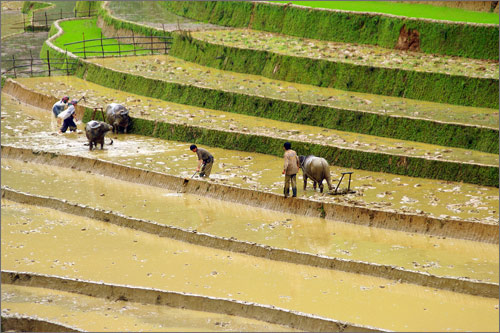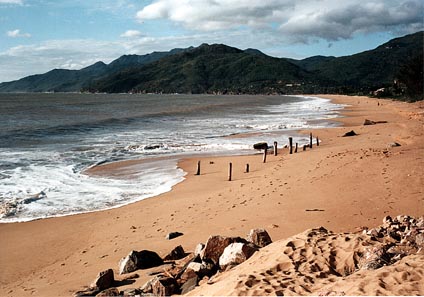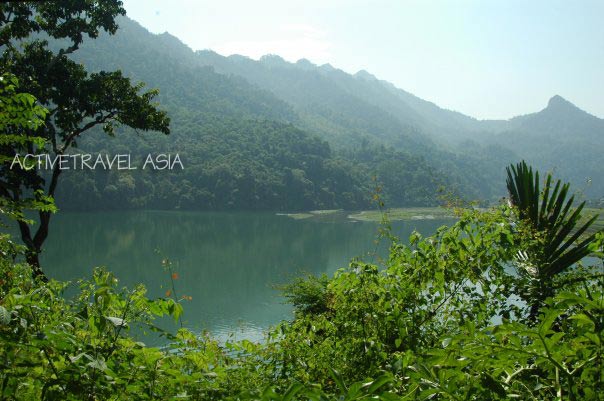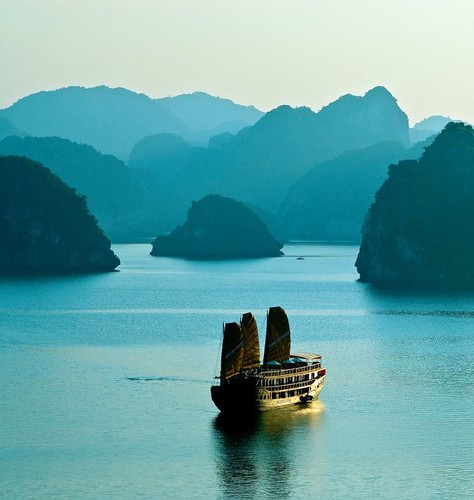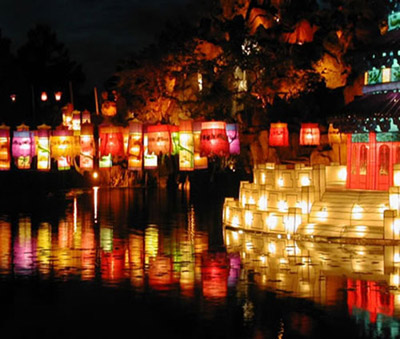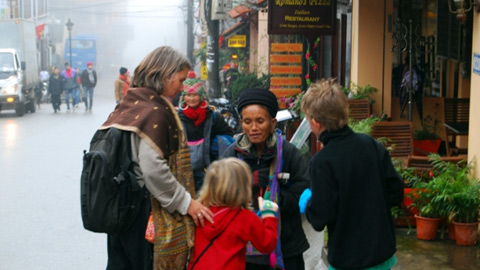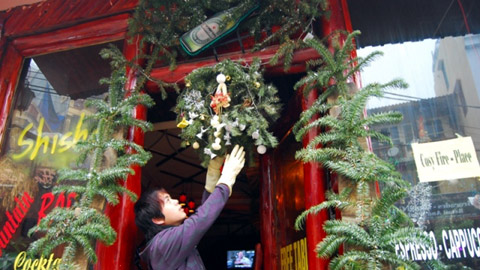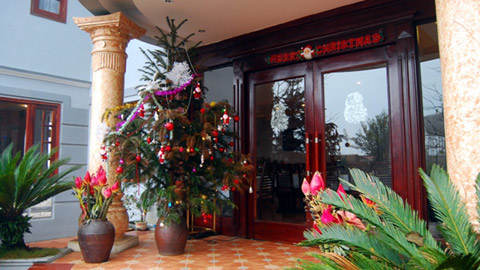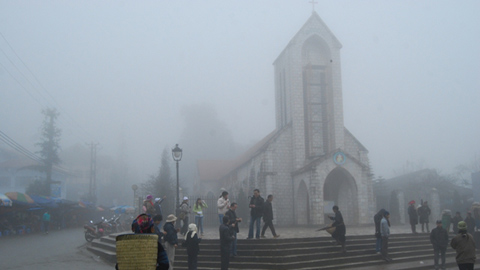by Thanh Ha  |
Wheeling around: Members of the E Mong cycle group on the road. E Mong organises regular cycle tours around the country. — File Photo |
Pedalling slowly on his rented bicycle, Jerome Gastel, a visitor from Switzerland, enjoys the fascinating architecture of Ha Noi's Old Quarter.
Viet Nam was a strange country to the 28-year-old some months ago but he has no regrets about visiting the country after a letter from his friend advised him to do so.
In the letter, his friend wrote about a peaceful nation, steeped in history.
Gastel did not hesitate in booking his flights and decided that the best way to see Viet Nam was by bicycle.
"I have visited HCM City, Nha Trang, Da Nang, Hue and finally Ha Noi, which is my favourite destination so far," Gastel says.
"Ha Noi is not only a modern city but also one where I can admire vast green rice fields, shady rows of bamboo where people gather and chat, the old Co Loa Royal Citadel, and most of all, the Old Quarter."
Gastel rents a bike for VND30,000 (US$1.7) per day to enjoy the city's sites which according to him, makes it easier to see typical aspects of Ha Noi such as vendors shouldering baskets, tea shops hidden down narrow alleys and pagodas.
"While I ride around the city, I also get the chance to visit souvenir shops and galleries."
Robert Martines, a sportsman from Melbourne, shares Gastel's feelings on his second visit to the city.
"Viewing the city by bicycle is a pleasure. Here I feel more relaxed in contrast to HCM City and cities in my country," he says.
"Ha Noi is a city of history and culture. I love it and I hope to have chance to understand it more."
 |
Off the beaten path: Foreigners have shown interest in discovering Ha Noi's Old Quarter by bicycle. The city is home to a lot history and culture and has many secrets to discover. — VNS Photo Doan Tung |
Demand for bicycles is increasing among both locals and foreigners, especially young people who have gradually grown to recognise the environmental benefits of the simple vehicle.
"My customers are mostly foreigners but some of them are students that study here. I'm also starting to welcome more and more Vietnamese customers," says Huong Giang from Diep Tran Tourism Company on Hang Bac Street.
Giang says her customers sometimes rent bicycles for up to a month. These people usually have little knowledge of the city to start with but despite the language barrier and the foreign customs and roads, in some ways they grow to know Ha Noi better than the locals who were born and grew up here.
"I have no bike at home. I'm saving money to buy one but while I'm waiting until I've saved enough, I come here to rent," said Vu Hoai Anh, a post-graduate student.
"At present, bikes are the cheapest and safest vehicle. They are easy to use and repair and most of all, they do not pollute the environment. It is my first choice of transport and I can't wait until I have my own," Hoai Anh says.
One of the difficulties for people touring the city is the chaotic traffic but that problem cannot quench their thirst for discovery.
Gastel says he was a little afraid of the city's traffic to start with but now he knows how to overcome the challenges of riding and how to ensure his safety.
"It was really an obstacle for me in the beginning but now I am okay, I am a good rider."
People can easily find rental bikes in the Old Quarter on Dinh Liet, Hang Bac and Hang Be streets, with a range of prices depending on the quality of the bikes and the season.
Renting a bike is simple. Foreigners leave their passports at the shop, pick up the bike and helmet and enjoy their tour. Maps are also provided.
Apart from people like Gastel and Martines who are keen on life in the Old Quarter, many others love to enjoy the rural areas and traditional handicraft villages of the capital. They visit destinations such as Bat Trang Ceramic and Pottery Village or Van Phuc Silk Village.
People who are fans of bike riding can register on forums like xedap.org or xedap.vn where they are updated with local and international cycling news.
Hoai Anh is a member of both forums and calling his friends to be member of a group of bike lovers called E Mong (Painful Bottom)
Instead of vehicles with engines, these young people are always ready to tour the country by bicycle.
Despite the fact Hoai Anh and his friends are busy with their jobs, they still find time to tour with their group.
"Riding the bikes can hurt our bottoms but it is a good feeling," says a member of the group with a laugh.
"After really pushing ourselves, we are stronger and healthier. In short, the bottom hurts but the head comforts," he says.
Established about a year ago, the group has been on around 30 tours to different areas of Ha Noi and to other cities and provinces including Hoa Binh, Bac Ninh and Ha Giang.
The E Mong group often hold a tour every two weeks. Any member can suggest a destination for their next trip.
"Anyone who is interested in riding is welcome to join us. We are all amateur riders so there are no rules for members. All they have to do is register with us and ensure that they are strong enough to enjoy the tour," said Vu Nguyen Ngoc Linh of E Mong.
"Riding is a good way to escape from a week of stress and tiredness," says Xuan Anh, another member.
"There is no better way to discover the beauty of the country and people. A trip of about 100km is not an easy challenge for anyone. I can't forget the thirst, suffocation and exhaust fumes I endured on my first rides. But now we are experienced and those memories are a thing of the past that have helped us to become best friends," he says. — VNS





